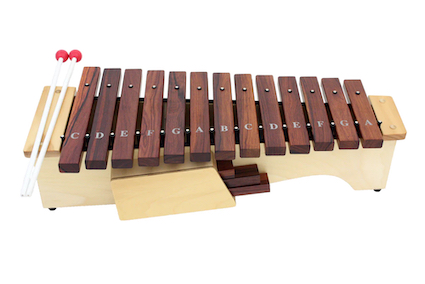Y2. Lesson 25. Melodic canon
Prior learning: Canon
Duration: 30 minutes
Materials: Woodblocks or claves
Keywords: Beat, rhythm, singing, chanting, partners, rhymes, circle games.
Difficulty: ![]()
Prepare
Present
Melodic canon
Practise
Inner hearing
 A melodic canon is a musical composition or performance technique where two or more voices or instruments play the same melody but start at different times. The voices or instruments perform the melody in such a way that one begins the melody. After a specific interval (temporally or in the musical score), another voice or instrument plays the same melody, creating an overlapping and harmonious effect.
A melodic canon is a musical composition or performance technique where two or more voices or instruments play the same melody but start at different times. The voices or instruments perform the melody in such a way that one begins the melody. After a specific interval (temporally or in the musical score), another voice or instrument plays the same melody, creating an overlapping and harmonious effect.
 Melodic development
Melodic development
![]() Students sing a classic song in canon.
Students sing a classic song in canon.
- Explain that students will sing Baa Baa Blue Sheep.
- Lead the class in singing the song until secure.
- Divide the class into two groups.
- Explain that the song will be sung in canon, which means that both groups will sing but the second group will start at a different time.
- The first group should start singing.
- Lead the second group to follow after two measures.
- Closely monitor the results and offer gentle guidance to any students having difficulty.

 Rhythmic development
Rhythmic development
![]() Students clap a rhythm and discover the song's name.
Students clap a rhythm and discover the song's name.
- Students are seated and attentive.
- As in the previous lesson, project the graphic on the board.
- Ask students to clap the first rhythm pattern and ask for the song's name. [Are you sleeping]
- Lead the class in singing the song.
- Ask where the strong beats are found and for the metre [4].
- Repeat for the second song [Buttercup].
- Repeat for the third song [Candle Burning Bright].
- Repeat for the fourth song [Dinah].
 Creative movement
Creative movement
![]() Students enjoy this classic song and game.
Students enjoy this classic song and game.
- Choose two students to become the "gatekeepers." These children stand facing each other with their arms raised to form an arch, creating a "gate."
- The rest of the students form a line and walk under the arch while singing "Oranges and Lemons".
- As students walk under the arch, the gatekeepers lower their arms to "capture" one child by closing the arch at a specific point in the rhyme.
- The student caught in the arch becomes either an "orange" or a "lemon" for the next round.
- The game continues with the captured student joining the gatekeepers. They will help form the arch, and the remaining students continue to walk through and sing the rhyme.
 Listening
Listening
![]() Students use inner hearing to identify known songs.
Students use inner hearing to identify known songs.

- Students are seated and attentive.
- Begin by playing the first few bars of a known song on a tuned classroom percussion instrument, such as a glockenspiel.
- Choose a smile song to begin with, such as Snail Snail.
- Choose a student to identify the song.
- Once the song is correctly identified, ask the class to sing with you from the beginning.
- Repeat the procedure with another song, perhaps with increasing difficulty.
- These exercises are excellent in developing inner hearing.
 Visual learning
Visual learning
![]() Students revise their knowledge of symbols used in music.
Students revise their knowledge of symbols used in music.
- Students are seated and attentive.
- Project the graphic on the board.
- Explain to students that you will point to each symbol in turn and ask a volunteer to answer.
- Begin with the first symbol [crescendo]. Ask a student what the symbol means.
- If the answer is incorrect, choose another student.
- Give clues such as humming and getting louder as you open your arms vertically.
- Repeat, moving through each symbol in turn, canvassing answers.
- This is an excellent exercise for the revision of prior knowledge.
 Instruments
Instruments
![]() Students discover how to play Ring O' Rosy on tuned percussion.
Students discover how to play Ring O' Rosy on tuned percussion.
- Divide the class into two groups, one group will use glockenspiels and the other xylophones or similar instruments.
- Teach the melody of Ring O' Rosy to the first group using a good mallet technique.
- When secure, teach the accompaniment to the second group.
- When secure, lead both groups to play together and conduct whilst monitoring class progress.
- This exercise may take more than one learning period to master.

 Part work
Part work
![]() Students use a target phrase as an ostinato pattern.
Students use a target phrase as an ostinato pattern.
- Lead everyone in singing Apple Tree until secure.
- Divide the class into two groups.
- One group will sing the song, and the other will sing an ostinato pattern using so and mi.
- For the ostinato group, practice until secure.
- Count the song in and have both groups sing.
- When secure, switch the groups over.
 Assess
Assess
Suggested lessons
Y1. Beat II

Y1. Beat III

Y1. Beat IV

